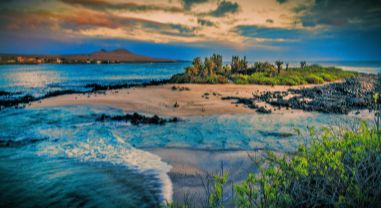Located in the middle of the Pacific Ocean, the Galápagos Islands are one of the world’s most popular wildlife-viewing destinations. Volcanic islands off the coast of Ecuador are home to an incredible variety of animals and plants. Charles Darwin drew inspiration for his theory of evolution from these islands. Make the most of your time in the area by seeing as much of the diverse wildlife as you can.
There are three ocean currents meeting at the Galapagos Islands in the Pacific Ocean. Because of their location at the confluence of warm and cold water, the area has a turquoise-colored climate and a diverse range of marine ecosystems. On Isabela, you’ll find giant tortoises, and on Fernandina, you’ll find marine iguanas.
The Galapagos consists of Isabela and Santa Cruz, the two largest islands. Isabela, the largest of these, is nearly 2,000 square miles in area. Almost three-quarters of the islands are occupied by this island. Volcan Wolf, Isabela’s highest point, stands at 1,707 m (5,600 ft). The Galapagos Islands’ hot spot is at least 90 million years old, according to scientists.
Galapagos Islands
Tropical and temperate climates can be found on the islands, which are located close to the equator. As a result of their isolation, Galapagos Islands are home to an incredible variety of plant and animal species. For more than a century, researchers have been studying the ecosystem of the Galapagos Islands. Of all the scientists who have visited the Galapagos Islands, Charles Darwin is the most well-known. When he visited the islands in 1835, it was there that he developed his theory of evolution through selection.
Weather conditions are affected by a combination of three major ocean currents and four smaller ones. Cold, nutrient-rich waters from Antarctica enter the Humboldt or Peru Current, while the Northern Equatorial Countercurrent supplies fresh water to the Panama Current. Deep ocean water is brought to the surface by the Cromwell or Equatorial Undercurrent. The islands’ distinct climate can be attributed in part to these two ebbs and flows.
In the Galapagos Islands, you’ll find an abundance of wildlife, including flightless cormorants, sea lions, and fur seals. Lava flows and mangrove forests are among the other sights you’ll see. You’ll be able to get up close and personal with a wide variety of Galapagos animals. Snorkeling the islands, you have a good chance of seeing whales.

















